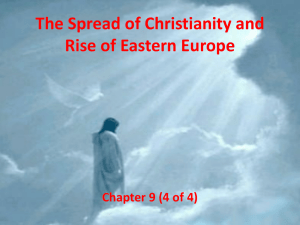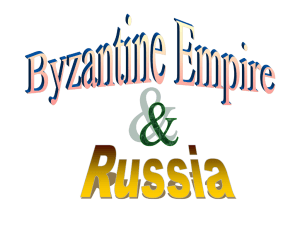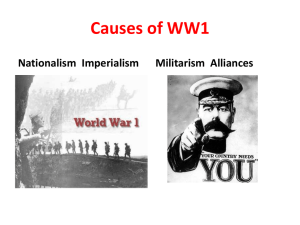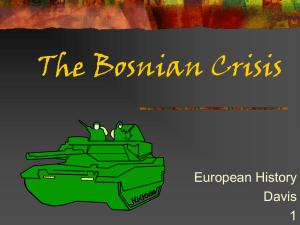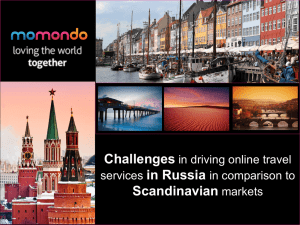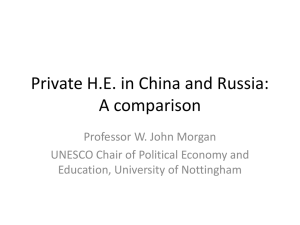Christian Europe
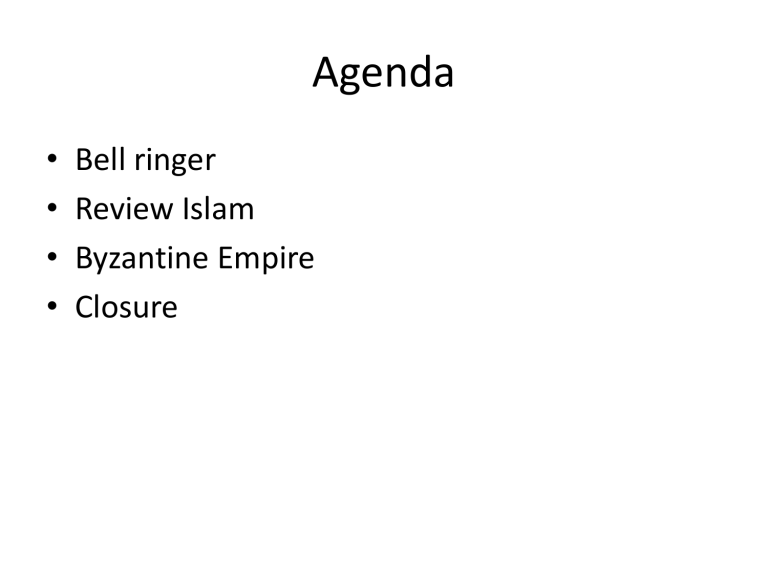
• Bell ringer
• Review Islam
• Byzantine Empire
• Closure
Agenda
Review
• What is the significance of the Shari’a?
• How did urbanization and conversion prompt accomplishments?
• What was the role of women in Islamic society? Slaves?
• How did the migrations of Iranian scholars center Islam on the madrasa and how did they contribute to the rise of Sufism?
Unit 3: Regional and Transregional
Interactions (600 C.E. – 1450 C.E.)
ESSENTIAL LEARNING: CHRISTIAN
SOCIETIES EMERGE IN EUROPE(600-
1200)
Objectives
• Evaluate the origins and effects of the schism in 1054.
• Describe the evolution of the Byzantine
Empire from rise (or survival?) to fall.
• Identify cultural achievements of Byzantium.
• Identify the contributions of Byzantine missionaries to Russia.
Essential Questions
• What were the origins and effects of the schism in 1054?
• Describe the evolution of the Byzantine
Empire from rise (or survival?) to fall.
• What were the cultural achievements of
Byzantium?
• What did Byzantine missionaries contribute to
Russia?
Target: The Byzantine Empire (600-
1200)
• Christianity.
• Continuation of Roman imperial rule and tradition.
• One ruler with absolute authority prevented fall.
• Arab invasions reduced population, wealthy provinces, and power.
• Turks threatened north and south.
• Schism in 1054
– Mid-ninth century – patriarchs of Constantinople challenged Roman papal jurisdiction and some
Latin church practices.
– Formal break between the Latin and Orthodox churches.
• Society and urban life
– Initial imperial authority and urban prosperity.
– 6 th century – “plague of Justinian”
– 7 th century – epidemics, loss of land to Muslims
– Family-based military aristocracy by end of eleventh century.
– Economics
• Emperors set prices, organized grain shipments, and monopolized trade in luxury goods.
– May have slowed technological development and economic innovation.
• Focus on Constantinople drained wealth from other cities.
• No advanced farming technology.
• Fell to the Ottomans in 1453.
• Cultural achievements
– Hagia Sophia (“Sacred Wisdom”) cathedral
– Preserved Greco-Roman civilization
– Justinian’s Code
– Missionaries influenced Russia with Cyrillic alphabet, domed architecture, and Orthodox
Christianity
Essential Questions
• What were the origins and effects of the schism in 1054?
• Describe the evolution of the Byzantine
Empire from rise (or survival?) to fall.
• What were the cultural achievements of
Byzantium?
• What did Byzantine missionaries contribute to
Russia?
Agenda
• Bell ringer
• Review Byzantine Empire
• Early Medieval Europe
• Closure
Review
• What were the origins and effects of the schism in 1054?
• Describe the evolution of the Byzantine
Empire from rise (or survival?) to fall.
• What were the cultural achievements of
Byzantium?
• What did Byzantine missionaries contribute to
Russia?
Unit 3: Regional and Transregional
Interactions (600 C.E. – 1450 C.E.)
ESSENTIAL LEARNING: CHRISTIAN
SOCIETIES EMERGE IN EUROPE(600-
1200)
Objectives
• Describe the role of Germanic kingdoms in western Europe after the fall of Rome.
• Identify the importance of the Carolingians.
• Describe manorialism.
• Describe feudalism.
Essential Questions
• What was the role of Germanic kingdoms in western Europe after the fall of Rome?
• What was the importance of the Carolingians?
• What is manorialism?
• What is feudalism?
Target: Early Medieval Europe (600-
1000)
• Rise of kings, nobles, and chieftains changed legal and political landscape of western
Europe.
• People sought protection of local lords.
• Carolingian family
– Military effectiveness
– Charlemagne encouraged Latin learning, set up schools, helped spread Christianity.
– Treaty of Verdun (843) divided into Frenchspeaking, Burgundy, and German-speaking regions.
• Vikings new threat to western Europe in 793.
– Captains organized settlement of Iceland,
Greenland, and Vinland.
– William the Conqueror invaded England in 1066 – ended Anglo-Saxon domination of the island.
Map 10-2, p. 260
• Self-sufficient economy
– Most cities lost population, some became villages.
– Reliance on local resources.
– Growth of Germanic cultural traditions because of decline of literacy.
• Manorialism
– Manors - self-sufficient farming estates
– Many farmers gave land to large landowners in return for political and physical protection.
– Poor communication + no organized government = landowners depended on own resources.
– Serfs – agricultural workers belonged to the manor.
• Early medieval society in the West
– Men swore allegiance to war chiefs.
• Increased use of mounted warriors.
– Feudalism
• Kings and lords gave land to vassals in return for military support from the knights.
• Oversimplification.
– Most Germans fought on foot.
– Knights
• Stirrups.
– Since land was basis of wealth, needed financial support from land revenues.
• Kings began to reward armed service with land grants
(fiefs)
– Lords provided governance and justice.
– Church limited power of the monarch.
• Noblewomen
– Marriage alliances affected entire kingdoms.
– Little say in marriage matters.
– Could own land, sometimes administered estates when husbands were at war.
– Non-noble women worked in the fields.
Essential Questions
• What was the role of Germanic kingdoms in western Europe after the fall of Rome?
• What was the importance of the Carolingians?
• What is manorialism?
• What is feudalism?
Agenda
• Bell ringer
• Review Islam (through umma)
• Islam (to
Review
• What was the role of Germanic kingdoms in western Europe after the fall of Rome?
• What was the importance of the Carolingians?
• What is manorialism?
• What is feudalism?
Unit 3: Regional and Transregional
Interactions (600 C.E. – 1450 C.E.)
ESSENTIAL LEARNING: CHRISTIAN
SOCIETIES EMERGE IN EUROPE(600-
1200)
Objectives
• Describe the causes of the investiture controversy and explain how this illustrates the relationship between the Church and monarchs during the Middle Ages.
• Evaluate the role of monasteries.
Essential Questions
• What were the causes of the investiture controversy? How does this illustrate the relationship between the Church and monarchs during the Middle Ages?
• What was the role of monasteries?
Target: The Western Church
• Pope – head of the church in western Europe.
• Missionaries spread Christianity to British Isles and German lands.
• Roman nobles lost control of the papacy.
– Obstacles to unifying church standards and practices – disagreements over regulations, lack of educated clergy, difficult communication, political disorder.
– Lingering polytheism, lax enforcement of prohibition of marriage of clergy, nepotism, and simony.
• Unifying forces – asserting legal jurisdiction over clergy, combating polytheism, calling on secular rulers to recognize pope’s authority.
• Politics and the church
– Pope and kings both saw themselves as ultimate authorities.
– 962 – pope crowned the first Holy Roman
Emperor
• Secular authority as guardian of Christian interests.
Little influence.
– Canon law gave pope legal jurisdiction over all clergy and church property.
– Investiture controversy – question over who held ultimate authority over bishops.
• Concordat of Worms (1122) reduced tensions
• Monasticism
– Monks and nuns lived in organized communities
– Devotion, work, celibacy, poverty, obedience to the abbot.
– Preserved literacy and learning.
– Missionaries.
– Housed travelers.
– Convents provided refuge for widows.
Essential Questions
• What were the causes of the investiture controversy? How does this illustrate the relationship between the Church and monarchs during the Middle Ages?
• What was the role of monasteries?
• Bell ringer
Agenda
Review
• What were the causes of the investiture controversy? How does this illustrate the relationship between the Church and monarchs during the Middle Ages?
• What was the role of monasteries?
Unit 3: Regional and Transregional
Interactions (600 C.E. – 1450 C.E.)
ESSENTIAL LEARNING: CHRISTIAN
SOCIETIES EMERGE IN EUROPE(600-
1200)
Objectives
• Evaluate why power in Kievan Russia differed from power in western Europe during the Middle
Ages.
• Describe the role of the Varangians in Kievan
Russia.
• Evaluate the role of Vladimir I in making
Orthodox Christianity the official religion of
Kievan Russia.
• Identify Byzantine culture present in Kievan
Russia.
Essential Questions
• Why did power in Kievan Russia differ from power in western Europe during the Middle
Ages?
• What was the role of the Varangians in Kievan
Russia?
• How did Vladimir I make Orthodox Christianity the official religion of Kievan Russia?
• What elements of Byzantine culture were present in Kievan Russia?
Map 10-3, p. 272
Target: Kievan Russia (900-1200)
• The Rise of the Kievan Empire
– Geography
• Frozen tundra, cold forest zone, more temperate forest, mix of forest and steppe grasslands, grassland.
• Several navigable rivers run north to south.
– Linguistic and territorial changes.
• Most Germanic peoples migrated into eastern Europe from Ukraine and Russia in Roman times.
– Those who remained behind spoke eastern Slavic languages.
• Forest dwellers, farmers, and steppe nomads helped each other economically.
– Arrival of Varangians (Swedish Vikings).
• Rus came to refer to the Slavic-speaking peoples ruled by the Varangians.
• Kiev controlled trade on Dnieper River, had contacts with Byzantium.
– 980 - Vladimir I grand prince of Kievan Russia.
• Converted to Orthodox Christianity, invited clerics and missionaries.
• Brought Cyrillic alphabet
p. 273
• Society and culture
– Power from trade, not landholding.
– Many cities little more than fortified trading posts, but were centers for development of crafts.
– Christianity spread, but there was some polytheist rebellion.
• Church became increasingly involved in politics and economics.
Essential Questions
• Why did power in Kievan Russia differ from power in western Europe during the Middle
Ages?
• What was the role of the Varangians in Kievan
Russia?
• How did Vladimir I make Orthodox Christianity the official religion of Kievan Russia?
• What elements of Byzantine culture were present in Kievan Russia?
Agenda
• Bell ringer
• Review Islam (through umma)
• Islam (to
Review
• Why did power in Kievan Russia differ from power in western Europe during the Middle
Ages?
• What was the role of the Varangians in Kievan
Russia?
• How did Vladimir I make Orthodox Christianity the official religion of Kievan Russia?
• What elements of Byzantine culture were present in Kievan Russia?
Unit 3: Regional and Transregional
Interactions (600 C.E. – 1450 C.E.)
ESSENTIAL LEARNING: CHRISTIAN
SOCIETIES EMERGE IN EUROPE(600-
1200)
Objectives
• Describe the evolution of western Europe after 1000.
• Describe how new technologies contributed to economic revival.
• Evaluate the significance of northern Italian cities as well as Flanders.
Essential Questions
• How did western Europe evolve after 1000?
• How did new technologies contribute to economic revival?
• What was the significance of northern Italian cities as well as Flanders?
Target: Western Europe Revives(1000-
1200)
• Slowly emerged from subsistence economy.
• Population and agricultural production increased.
• Money-based economy returned.
• Role of technology
– Population increase.
– New plow, efficient draft harnesses.
– Horses.
• Cities and the rebirth of trade
– Independent cities appeared first in Italy and
Flanders.
• Lacking extensive farmland, turned to manufacturing and trade.
– Serfs free when they lived in the city for a year and a day.
– Ghent, Bruges, and Ypres in Flanders.
• Fishing and wool trades.
– Coinage returned.
Map 10-4, p. 277
Essential Questions
• How did western Europe evolve after 1000?
• How did new technologies contribute to economic revival?
• What was the significance of northern Italian cities as well as Flanders?
Agenda
• Bell ringer
• Review Islam (through umma)
• Islam (to
Review
• How did western Europe evolve after 1000?
• How did new technologies contribute to economic revival?
• What was the significance of northern Italian cities as well as Flanders?
Unit 3: Regional and Transregional
Interactions (600 C.E. – 1450 C.E.)
ESSENTIAL LEARNING: CHRISTIAN
SOCIETIES EMERGE IN EUROPE(600-
1200)
Objectives
• Describe the causes of the Crusades.
• Evaluate the impact of the Crusades on western Europe.
Essential Questions
• What were the causes of the Crusades?
• What were the impacts of the Crusades on western Europe?
Target: The Crusades (1095-1204)
• Roots of the Crusades
– Ambitious – land
– Nobles – land and titles.
– Italian merchants – increase trade and acquire trading posts in Muslim territory
– Holy Land had been under Muslim rule for 400 years.
• Pilgrimages, generally protected by Muslims, but conditions deteriorated.
• Council of Clermont (1095) – pope called on
Christians to reclaim the Holy Land
p. 278
• Impact
– Exposure to Muslim culture.
• Eventually, Europeans learned to make pasta, paper, refined sugar, colored glass, etc.
• Many works brought back, eventually translated into
Latin and studied.
– Transformed the intellectual world of the western Europeans.
Essential Questions
• What were the causes of the Crusades?
• What were the impacts of the Crusades on western Europe?
